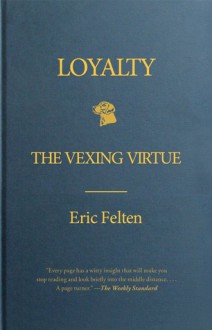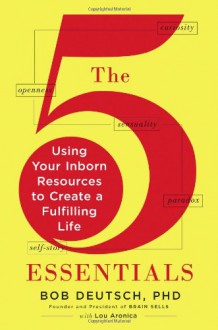
Derived from interviews with a wide range of people who experienced or observed New York's 1991 Crown Heights racial riots, Fires In The Mirror is as distinguished a work of commentary on black-white tensions as it is a work of drama. In August 1991 simmering tensions in the racially polarized Brooklyn, New York, neighborhood of Crown Heights exploded into riots after a black boy was killed by a car in a rabbi's motorcade and a Jewish student was slain by blacks in retaliation. Fires in the Mirror is dramatist Anna Deavere Smith's stunning exploration of the events and emotions leading up to and following the Crown Heights conflict. Through her portrayals of more than two dozen Crown eights adversaries, victims, and eyewitnesses, using verbatim excerpts from their observations derived from interviews she conducted, Smith provides a brilliant, Rashoman-like documentary portrait of contemporary ethnic turmoil.
Amazon.com
On August 19th, 1991, the motorcade of a Lubavitcher Hassidic rebbe was traveling through Brooklyn. While driving through the Crown Heights neighborhood, at 8:20pm, one car in the motorcade drove up on the curb suddenly, the car striking and killing seven year old Gavin Cato and also leaving his older cousin with a broken arm. Word quickly spread that a black child had been killed by a Jewish motorist. Some witnesses even said the driver appeared to be intoxicated. Three hours later and five blocks away from the site of the crash, a visiting Hasidic history professor from Australia was stabbed, dying at the hospital some hours later.
The basic timeline of events:
* August 19th, 8:20pm -- Seven year old black child Gavin Cato killed by car that jumps a curb
* Same night, 11:30pm -- visiting Hasidic Jew professor Yankel Rosenbaum, with no connection to the death of Gavin Cato, is stabbed five blocks away from crash site.
* August 20th, 2am -- Rosenbaum dies at the hospital from his stab wounds; later that day, Trinidad-American teen Lemrick Nelson, Jr. is arrested in connection with the stabbing. By August 21st, he is charged with second degree murder (but by October 1992 is acquitted).
* August 21st -- funeral of Yankel Rosenbaum; that same day marks the start of days of rioting and looting throughout the Crown Heights community. That first day, 16 arrests and 20 police officers left injured.
* August 22nd -- the arrest count during the riots rises to 107, the police presence increased to over 1500 officers.
* August 24th -- 1500 protesters led by Rev. Al Sharpton and Alton Maddox march through the streets of Crown Heights.
*August 26th -- funeral of Gavin Cato; Rev. Al Sharpton delivers the eulogy.
* Violent acts and courtroom drama in connection with the deaths of Cato and Rosenbaum continue back and forth between the black and Jewish communities through 1992 and 1993, both sides wanting justice and vengeance.

In 1993, Anna Deavere Smith crafted a one woman stage play depicting these events, compiled from the numerous interviews she did with more than two dozen Crown Heights community members, representing both sides of the story, as well as the impressions of high profile members of the black community such as Rev. Al Sharpton and writer Nzotake Shange. Smith pulls from the interview transcripts verbatim to create the monologues for the stage show, ending on the words of Carmel Cato, Gavin Cato's father.
The early portions of the play explore the political and emotional environment that existed prior to the events of August 1991, while the later monologues get more into the course of events on August 19th itself (I was surprised to see the text here included one of the actual crime scene photos under one of the passages). Smith, in her foreword, writes of how it was difficult to get a clear, unbiased look of the events at the time when there was media bias from nearly every angle. It was her hope and goal to use the interviews, and later the play, to give a more honest, balanced display of this tragic and emotionally charged time. Also, prior to the start of each monologue, Smith gives contextual history such as when / where each interview took place, even what the person was wearing. For example, in regards to the use of the interview with rapper Big Mo, Smith notes that the interview used in the text was actually one done in 1989.
"Fires In The Mirror is part of a series of theater (or performance) pieces called On the Road: A Search for American Character, which I create by interviewing people and later performing them using their own words. My goal has been to find American character in the ways that people speak... my goal was to create an atmosphere in which the interviewee would experience his / her own authorship. Speaking teaches us what our natural "literature" is. In fact, everyone, in a given amount of time, will say something that is like poetry."
~ Anna Deavere Smith on her process

While I appreciate Smith's unique approach to the subject matter, I'm not sure it entirely worked for me, personally. I was expecting for these passages to be more impactful. While some of them are quite good, there are others here where I was wondering about the relevance. The words themselves always didn't quite hit the mark for me, so I did a watch of the stage show itself. While better, even there something was falling short. Again, I can appreciate and acknowledge the work that clearly went into crafting this show, but the execution ... something was a little off for me. It didn't always strike me as unbiased a portrayal as Smith claimed she was aiming for and some of the acting did come off as at least a little bit too caricatur-ish.

 Log in with Facebook
Log in with Facebook 

















